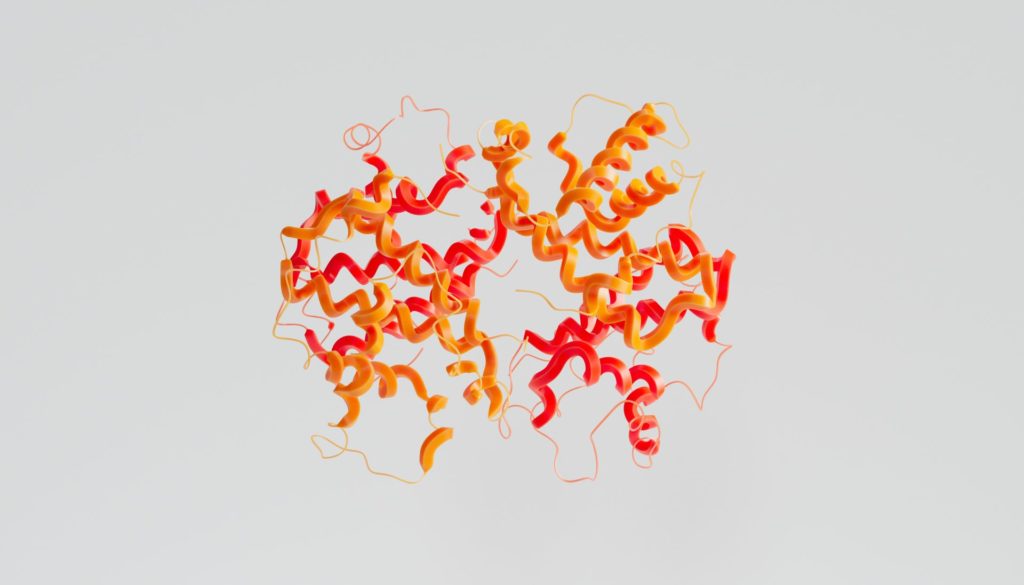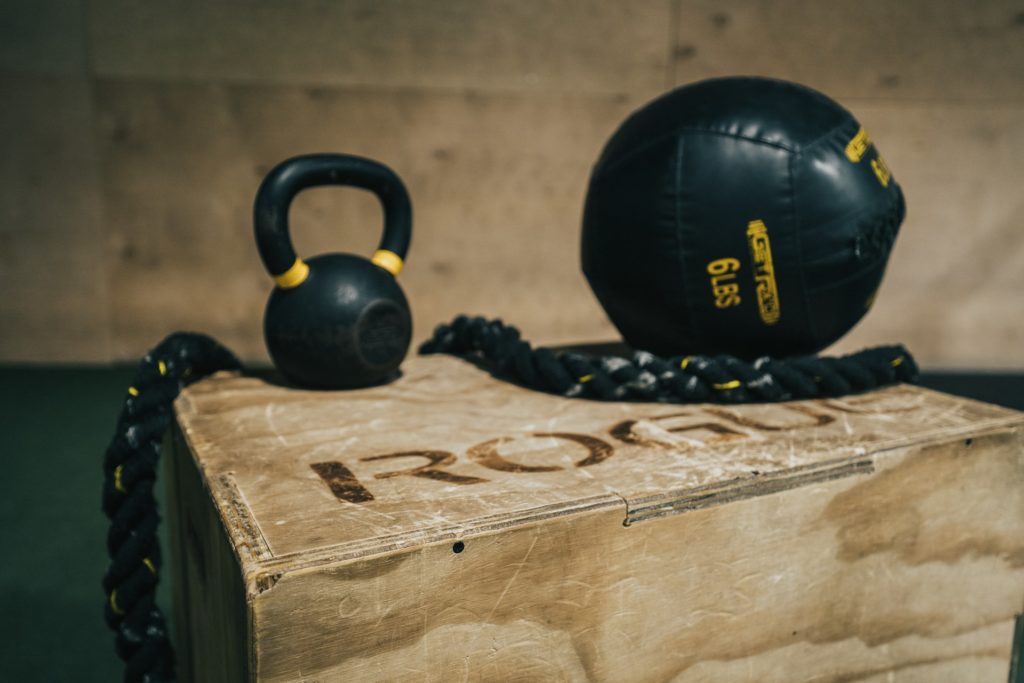Endurance training – either hated or loved. Some let it devour hours of their week, others solely spend 10 forced minutes after their workouts or avoid it altogether.
Yet endurance training is a great complement to strength training! One provides health benefits that the other cannot. Of course, specialization is important. If you want to get stronger and see yourself in weight training, you shouldn’t waste too much time on cardio. Still, it is important for health in the long run as most of your mitochondria are buried within your heart & brain. Today we are taking exactly at this relationship of endurance training for optimal health a close look!
After all, cardio has been with us humans for a while now – it’s one of the fundamental exercise attributes and has always been essential to our survival. In fact, we are well adapted to long-endurance performance, some anthropologists even hypothesized that we lost our fur to perform longer in high heat.
What is Endurance?
The Definition of Endurance

Endurance is by definition:
The ability to resist a stressor physically or also mentally, with the promise that the stressor will eventually win.
…And that’s true for both physically and mentally difficult things. It’s important to understand that I don’t just mean ‘cardio as exercise‘ here. Even movement in everyday life like gardening, climbing stairs, or carrying things ramps the heart rate up and counts as effective cardio.
The Different Types of Endurance
Endurance can also be sorted into these four different forms:
- Long term endurance (+14min – aerobic)
- Medium time endurance (~120s – 10min – aerobic & anaerobic)
- Strength endurance (20s – 120s – aerobic & anaerobic)
- Speed endurance (0-20s – anaerobic)
As you can see, they are divided according to the approximate duration of efoort. But the main factor is the involvement of the different energy supply systems.
We can get energy by using creatine phosphate, glucose & fats:
- Creatine is burned without oxygen and provides a lot of energy
- Glucose can be burned with and oxygen and provides decreasingly much energy
- Fats only with reference to oxygen and provides the least energy
This thought model is a purely theoretical one, because all systems always run in parallel, yet it is true that at certain times specific systems predominate. Therefore, creatine is also important in endurance sports and contributes to the continuous supply of energy even in the long term.
What we also see here is the clear ‘fatigue effect’ of endurance training: less and less power can be produced the longer a stimulus acts on us.
Physical Adaptations to Cardio Training
These four types of endurance stress certain parts of your body, causing very specific adaptations. They also stress different energy systems and decrease the respective their energy supply.
For example, sprints are largely creatinergic and glycolytically fueled, the marathon runner on the other hand derives far more energy from the oxidation of fatty acids. Therefore, it can be said that the following adaptations can be credited to endurance training:1http://www.sportunterricht.de/sek2/kursdober/abausdauer1.html.
- Muscle growth of the heart, especially the left ventricle
- Improved cardiac pumping: more efficient beats with more capacity
- Optimized mitochondrial respiration at the biochemical level
- Increase in capillary density: Growth of new blood vessels
- Special training of the biochemical energy supply systems that your endurance training uses
- Movement efficiency
These adaptations can also be conditionally achieved through strength training, just as you also build some strength with cardio, yet only aside. Also, extensive endurance training and dedicated strength training oppose each other in the genes they activate:
While cardio works a lot through the ‘mammalian target of rapamycin (mTOR)’, strength training correlates more with ‘adenosine monophosphate kinase (AMPK)’. Very simplistically, AMPK is involved in anabolic processes and mTor is involved in catabolic ones in relation to athletic performance. Nevertheless, this view is very simplified and one is not better than the other – one naturally wants to use both systems. mTor, for example, correlates with longevity and is also driven up by fasting, while sustained AMPK activation is related to negative influences. As always, it’s all about context.
Four Important Health Benefits of Endurance Training
Cardio Training challenges your Cardiovascular System uniquely
Stress in itself is neither good nor bad. We need stress to grow and become strong, but too much breaks us. What is different, however, are the sources from which the stress comes – Hans Selye received a Nobel Prize for his research on the effects of stress in the 1980s for this.
Endurance training is clearly an activity we can call eustress (=good stressor).2For example, things like environmental hormesis ( heat & cold), fasting, or sun exposure also fall into this bucket. Distress can be called negative stressors, such as car exhaust, cigarette smoke, or in my opinion, substances of chemical hormesis, such as secondary plant compounds and medications. It stresses your body and forces it to adapt with the goal to withstand the stress better the next time.
Any cardio workout will stress you, bring your heart rate up, raise your blood pressure, and thus demand performance. Depending on the method, the exact stressors differ, yet your cardiovascular system must be able to handle them. The heart becomes stronger, the biochemistry adjusts, the regulation by nerve impulses improves and the vascular walls undergo a change. 3Cardiovascular Effects and Benefits of Exercise
Also, endurance training (by definition) challenges the mind. At some point, you don’t want to go on, even though the body still can. While in the beginning, the body is the limiting factor, later it becomes more and more the mind. I believe that there is no other way to run an Ultra through Death Valley, the Ultraman across Hawaii, or up Mont Blanc.

Healthy Heart = Healthy Aging
Sure, it’s not that easy. Nevertheless, cardiovascular diseases are the No.1 risk to die from. 4https://ourworldindata.org/causes-of-deathAlthough in my opinion these find their main risk, and therefore main treatment, in species-specific nutrition, endurance training is a proven powerful intervention that helps supportively. Still, no amount of cardio training in the world will make up for refined sugars, nutrient deficiencies, and heart-damaging vegetable oils.
What cardio clearly helps with, nevertheless, is continuing to breathe life into the older years. Physical strength, agility and endurance are definitive factors that help keep you doing what fulfills you until the day you drop.
Death and illness are immensely complex topics, yet it is clear that exercise, along with your lifestyle, habitat, and diet are the 4 pillars to think about. If one of them is lagging behind, it is important to optimize it. Just like sleep, sufficient zonal nutrients or avoiding environmental toxins, cardio training is a piece of the puzzle to optimal human health. 5The cardiovascular system in the ageing patient
Optimize your Recovery through Cardio Training
Not only is cardio great for its own effects, it can also help you recover faster for strength training. Cardio works just like the sauna and increases blood flow to the organs – more blood means more oxygen & nutrients and that also means better regeneration. In addition, the body releases some hormones that help as well.
What is enormously important is the volume and intensity. If you push yourself too hard, you will shoot yourself in the foot and slow down your recovery. Therefore, load yourself in a relaxed manner with a slightly elevated heart rate and try not to make it demanding. You don’t want to stress the system or strain yourself neurologically. The same applies to the sauna, by the way, read more about it here!
Cardio & Strength Training are a superb Match
Properly planned, endurance training will help you get stronger, directly. Conversely, strength training will also help you become more enduring, directly. So what paradoxical mysteries am I talking about here?
Taken to the extreme, endurance & strength training are mechanistically opposed – as we have seen with mTOR and AMPK. Also, you have to train specifically to get better at what you do. This is only logical and in professional circles is called the SAID principle. Nevertheless, cardioadaptation helps you recover faster and some adaptations, such as better cardiac pumping and capillarization of the muscles are directly beneficial to strength training.
Additional strength helps endurance athletes prevent injury and helps muscles perform efficiently. There is more to the puzzle than just two biochemical mechanisms. In my opinion, mTOR vs. AMPK is simply an intellectual cop-out for many.
Also, cardio is a great vehicle to get into respiratory training, as you can combine the two well – albeit very uncomfortably. Respiratory training, on the other hand, helps you to oxygenate properly, to breathe nasally, to assess your needs and also to train the processes.
How much Endurance Training is enough?
The right Duration
We humans are made to exercise. We need to get our heart rate up regularly throughout the week. However, one extreme of too little is just as important to avoid as too much – if your goal is health optimization and not, for example, competitive sports.
According to the literature, it should be 150-300 minutes of moderate activity per week and 75 minutes of strenuous activity. The strenuous activity is best spread over 2-3 days. This should be the baseline, not an outstanding goal. And while 300 minutes sounds like quite a bit, it’s not much, as this includes normal daily work.
So my recommendation is 2-3 strenuous strength workouts of 30-45 minutes each (warm up & cool down do not count towards this) before the goal of health optimization. In addition, there should be 1-3 endurance units per week. However, try to get most of your exercise from everyday life and be active – go to work, ride your bike, have a morning routine, or move during your lunch break. Many roads lead to more activity:
Cardio is not training, but cardio training is a supplement to the stress that is missing from your everyday life.
What exactly this means for you, of course, depends on you and your goals. For me, for example, it means ‘only’ one cardio workout a week, but 6x a week handstands, strength & flexibility training. I also try to make my everyday life as active as possible. For you this may look completely different.
Have a clear Goal in Mind

Having a clear goal in mind helps you determine how much cardio is optimal for you. For me it’s one session a week, more robs me of the time and energy to do what I love. What about you?
So despite all the recommendations out there, try to adapt them to your life, not the other way around. In my experience, it is much more effective than additional training to optimize your lifestyle and, for example, ride your bike to work or go for a walk every morning and evening. This adds up to quite a bit of exercise without the need for ‘more exercise’. So many sources always recommend more training, yet at some point you run out of capacity.
So don’t let that stop you from doing what you love, but find ways to incorporate the recommendations into your life.
A good Program is crucial
A good plan is the be-all and end-all. It helps you do what’s important on a regular basis without doing too much or too little. It also determines your success in combining cardio & strength training. And that can get quite complex when you throw other beneficial activities like ice bathing, sauna, getting enough sleep, and fasting on top of it.
The bottom line is that you have to experiment and gain experience. Not everyone has time to work out 6x a week, go to the sauna just as often, and hang out in the ice bath 1h a week. Still, one sauna session, 3 workouts and 10 minutes in the ice bath is better than nothing.
So plan well and take care of yourself. Start slow and develop from there. Just because I speak highly of cardio, barefoot running, sauna or anything else, doesn’t mean you have to start right away. See how it fits, try it out and see if it’s feasible somewhere.
For example, you could combine two active cardio sessions with 5 days of training:
| Mo | Tu | We | Th | Fr | Sa | Su |
|---|---|---|---|---|---|---|
| Endurance 20-30′ | Endurance 20-30′ | |||||
| Push | Pull | Legs | Rest | Push | Pull | Legs |
| Choose a Type of Cardio for 6-10W | Choose a Type of Cardio for 6-10W |
The Different Methods for ENdurance Training in Comparison
Steady-State Method
Steady-State Cardio is probably the most known one:
- Run continuously until you reach a certain time or distance
- The important thing here is low intensity and continuous performance beyond ~15 minutes.
- In addition to running, you can of course row, swim, bike, or carry cement bags.
What is important to be classified as the ‘endurance method’ is the low intensity measured in your heart rate. Here there are the basic endurance 1 & 2 – GA1 falls in the range of 50-60% of your maximum heart rate, GA2 from 60-75%.6Your maximum heart rate here should be 220 – your age, so for me ‘220-27=193bpm’, so 60% of this is ~125bpm..
The continuous method requires your heart to keep pumping and triggers adaptations that affect cardiac output. The duration of exercise should be beyond 15 minutes to effectively achieve this adaptation. In combination with strength training, I would generally stay below 30 minutes of exercise per session to avoid excessive cortisol release.
Anaerobe ‘High-Intensity-Intervall’ Training

HIIT has been a hype for a few years now – this usually means this anaerobic form. And it fully meets the spirit of the modern age: more successes in a short time are marketed. This is what makes anaerobic HIIT:
- Short, near-maximal loads of a specific movement (burpees, sprints, jumps, …).
- Followed by a short recovery phase. This phase can also be a light movement, such as walking or jogging, instead of a complete rest.
- The goal is to train the heart under stress.
Best suited herizu loads of 10-30s followed by a break with 1-3 times the time. This is then one set and should be repeated for 3-12 sets.
It is important to mention that HIIT is not a substitute for the continuous method, as the adaptations are different. However, it makes perfect sense to cycle a HIIT form with the continuous method over the course of 6-10 weeks.7HIIT vs Continuous Endurance Training: Battle of the Aerobic Titans
Aerobe ‘High-Intensity-Intervall’ Training
Aerobic HIIT is quite unknown and is overshadowed by anaerobic HIIT. So where is the difference?
- Medium-duration, submaximal loads of a particular movement – e.g., running or swimming
- Followed by a pause in light exercise, e.g., walking or casual running
- The goal is to expose your heart to a series of stimuli in quick succession
For aerobic HIIT training, it’s best to choose classic endurance activities like running, swimming or cycling. Perform them for 2-4 minutes and then have a rest for 1-3 times that time. Often 1:1 is used, which would be 4 minutes of strenuous running paired with 4 minutes of easy running or walking. Also, it goes without saying to run strenuously for 2km and pause for another 2 – thus saving the stopwatch. In total there should be 3-7 sets of this.
Depending on how hard you push yourself, it will mainly target left heart hypertrophy, but also metabolic & neurological adaptations in the heart. Therefore, Aerobic HIIT is very versatile and unique. It is also great for beginners to do something different than the endless grind of the continuous method.
Intervall Training vs. Continuous Endurance Training
Both are pieces of the whole puzzle. So I wouldn’t stick exclusively with one, but rotate through all the forms based on cycles. This way you train all the endurance methods multiple times throughout the year and regularly get into the more specific benefits they promise.
It’s also how you train the different endurance types. One type of endurance has carryover to others, yet the specific training is most effective.8https://www.health.harvard.edu/exercise-and-fitness/interval-training-for-a-stronger-heart:
- For example, take explosive strength from maximum strength – getting stronger in one automatically helps you with the other, but does not replace specific training.
- Another example is active & passive flexibility – a lot of passive flexibility helps you build active strength, yet it doesn’t replace training that strengthens these end-grade areas.
Supercharge your Endurance Training!
Barefoot Running

If you’ve been following me for a while, you already know that I’m a big fan of minimal shoes and barefoot walking. In my opinion it is a must for everyone – modern shoes are extremely harmful to the feet directly and indirectly to many other body systems due to the biomechanics affected. So all people should be barefoot runners as well.
However, the way to get there is long after a previous life in traditional and constricting shoes. You actually have to relearn how to walk. In addition, the arch of the foot and all soft tissues have to get used to the new and increased load. This takes time. We’re talking many months here, far more likely a few years. Nevertheless, it is worth it.
The first step should be walking in barefoot shoes. Hereby one already learns how to walk correctly and how to absorb the impact of each step muscularly, instead of mainly in the passive joint apparatus in normal shoes. Running comes later and can be seen as another level, after which you can walk longer in minimal shoes without any pain.
Breath Work
Breathing training in itself does not have much to do with running. However, it is a valuable activity to get used to certain constellations of blood gas levels. It is also extremely important to learn nasal breathing. It is the standard of the human being. Breathing through the mouth should only be done under maximum load. Consequently, even when running, you should breathe 95% through your nose. And I bet very few people can do this, because on the one hand they can’t handle the appropriate blood gas levels and on the other hand their turbinates are not dilated enough.
But both can be trained and happens over time. Dry training helps here – just sit down and go through certain breathing sequences. A good place to start is Brian MacKenzie’s website, he has also posted some free routines and tests there that I have enjoyed using.
Later on, a goal should be to breathe exclusively through the nose while running. Also, you can do your breathing training while running if you are slightly masochistic and have had experience with both. For example, you can run hypoxemic9…too little oxygen by breathing slowly or hypocapnic10…too little carbon dioxide – we actually need it because it’s an important blood gas, not just a waste product with the help of forced hyperventilation. So why do people do this? It carries over to all other activities that require you to breathe. So to pretty much everything.
Fasted vs. Non-Fasted Endurance Training
You can also do your cardio while fasted. While the literature warmly discusses the effect, with varying results, I for one am anecdotally convinced that fasted cardio makes sense. Not all the time, but every once in a while. Your body is so metabolically just in a good position to burn fat & ketone bodies. This drives fat metabolism, but more importantly keto adaptation. By this is meant that your body learns to run only on fats even under stress. Literally…11Body composition changes associated with fasted versus non-fasted aerobic exercise
In addition, something in your stomach often interferes with endurance training and negatively affects performance. Try it out best for yourself and see how you feel. Of course, it is also important that it fits into your lifestyle.
Upgrade your Endurance Training: The TL;DR
- How?
What activity do you enjoy or want to master?
First decide exactly what you want to do. Different types come with different benefits and drawbacks. I’m a fan of walking because of its simplicity and because it’s one of the most natural movement patterns from an Ancestral Health standpoint. Make your own choice, of course. - What?
Train one endurance method for 6-10 weeks per cycle.
You remember the endurance method, Aerobic HIIT & Anaerobic HIIT. Don’t make the mistake of just training the same thing, keep your workouts exciting and challenge your body in multiple ways. - When?
Clearly Plan Your Cardio & Strength Training
Good planning will allow you to succeed. Of course, the same goes for any other activities you do that might clash with these two, like the sauna, fasting, or ice bathing. - How often?
Start slowly and be attentive
One session per week is better than none. 1-3 sessions of 20-30min are my recommendation if health optimization is your main goal. Also remember to optimize your daily routine. This is much more important than dedicated training.
Fußnoten & Quellen
- 1
- 2
- 3
- 4
- 5
- 6Your maximum heart rate here should be 220 – your age, so for me ‘220-27=193bpm’, so 60% of this is ~125bpm.
- 7
- 8
- 9…too little oxygen
- 10…too little carbon dioxide – we actually need it because it’s an important blood gas, not just a waste product
- 11